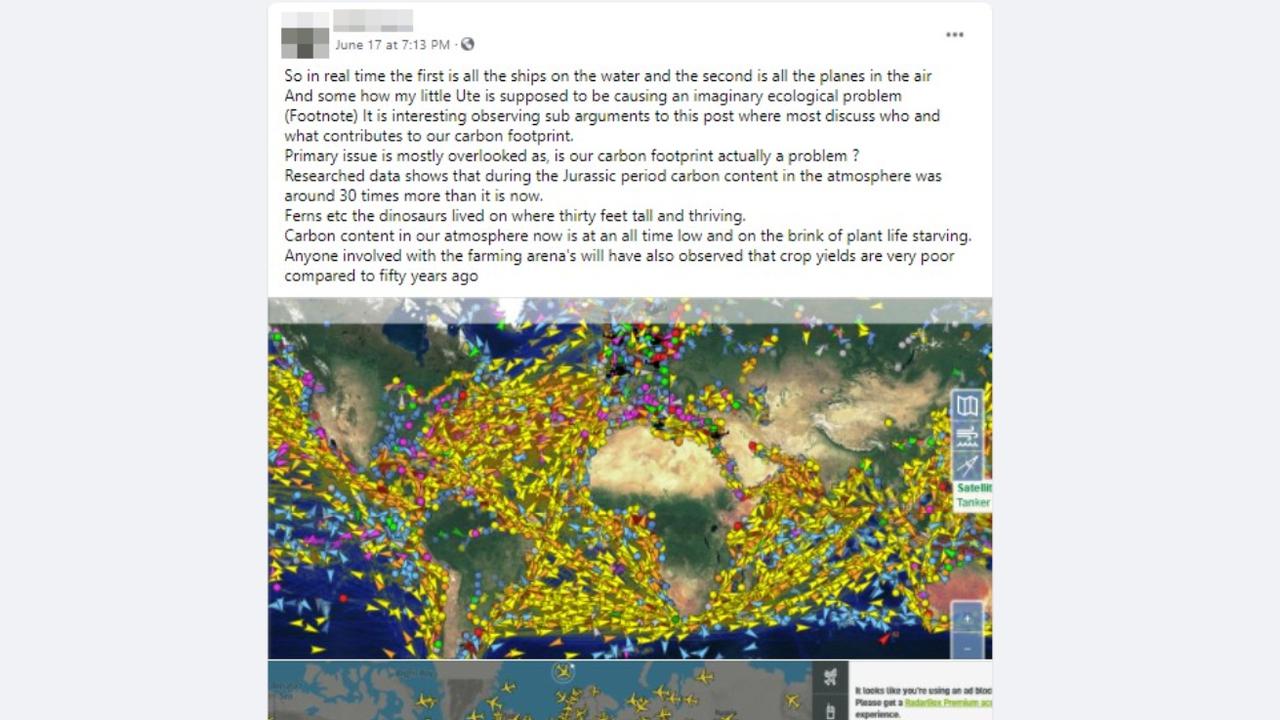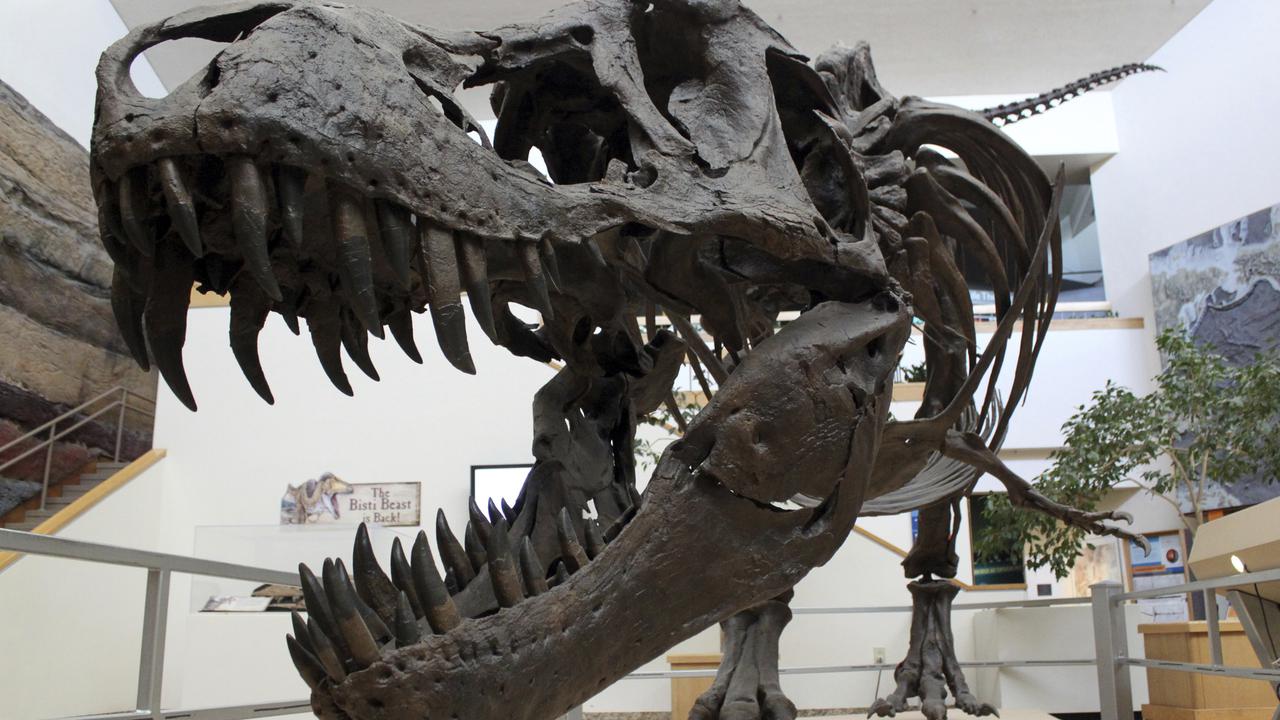The Statement
A Facebook user claims atmospheric carbon dioxide levels were 30 times higher during the Jurassic Period than at present, going on to suggest current levels of the greenhouse gas are lower than ever.
The June 17 post from a New Zealand-based account included the claims alongside images showing aeroplanes and ships operating around the world while also questioning the contribution of the user's own vehicle to "an imaginary ecological problem".
"Researched data shows that during the Jurassic period carbon content in the atmosphere was around 30 times more than it is now," the post says.
"Ferns etc the dinosaurs lived on where (sic) thirty feet tall and thriving. Carbon content in our atmosphere now is at an all time low and on the brink of plant life starving."
At the time of writing, the post had been shared more than 2800 times. It came four days after the New Zealand government announced a policy of providing a discount on low-emission vehicles funded through a levy on high-emission vehicles.

The Analysis
The post exaggerates the difference between carbon dioxide (CO2) levels in the atmosphere during the age of the dinosaurs and present levels, while ignoring that current rates are thought to be the highest in three million years.
While present CO2 levels are low on a geological timescale, experts say greenhouse gases are increasing at an almost unprecedented rate - and note that previous spikes have resulted in mass extinctions.
Wesleyan University earth and environmental sciences professor Dana Royer has published multiple papers on CO2 levels during the Phanerozoic Eon, which spans from 541 million years ago to the present.
He told AAP FactCheck via email that "almost all" studies have estimated CO2 levels were below 2000 parts per million (ppm) during the Jurassic Period, which ranges from around 200 million years ago to 145 million years ago. This CO2 level is around five times higher than the present level of about 416ppm.
Prof Royer noted one study put CO2 levels at 5000ppm during the Jurassic Period, but this used "an outdated regression" and its figures were closer to 10 times present levels when using updated models.
He referred to a 2017 paper he co-authored, published in Nature, which looked at CO2 levels over the past 420 million years. It showed CO2 levels peaked at about 2000ppm around 400 million years ago and again between 220 and 200 million years ago (figure 1). The figures were based on 1500 estimates using five different techniques taken from 112 published studies.
The study said fossil fuel consumption could increase atmospheric CO2 to levels not seen for 50 million years and may result in heating not seen in half a billion years if emissions continued unabated.
Prof Royer said ice core data from the past 800,000 years show CO2 levels are now significantly higher than at any other time in that period, and "the chances are pretty high" that CO2 levels are at the highest point in three million years.
He said the argument that "climate is changing all the time, and the earth has done just fine" is common among climate sceptics, but ignores the extreme level and pace of climate change caused by humans.
"The fastest climate events that we know about in the geologic record happened over thousands of years, and without exception these 'fast' events are associated with acute biological stress (e.g. the end-Triassic mass extinction, the end-Permian mass extinction and the Paleocene-Eocene thermal maximum).
"Climate change today is occurring over hundred-year timescales, over an order of magnitude faster than the aforementioned geological events. In my opinion, the main take-home lesson from studying the geologic record is that what is happening today is very unusual and grounds for extreme concern."
According to NASA data reconstructed from ice cores, current CO2 levels are higher than at any point in the last 800,000 years, with a steep increase recorded in the 20th century.
The US National Oceanic and Atmospheric Administration (NOAA) says the last time atmospheric CO2 levels were more than 400ppm was more than three million years ago, when temperatures were two to three degrees warmer and sea levels were 15 to 20 metres higher. It said levels have increased from 280ppm since 1750.
University of Sheffield natural sciences professor David Beerling, who is also an expert in Phanerozoic CO2 levels, said he was "not aware of publications out there supporting (the post's) wild claim".
He said his most recent research, published in Geophysical Research Letters in 2014, found CO2 levels during the Jurassic were likely around 1000ppm, or about two and a half times the present level.
University of Wollongong paleoclimatologist Helen McGregor said CO2 levels were about 2000ppm during the Jurassic Period, when temperatures were about five degrees warmer than today. She said levels are not currently at an all-time low as the CO2 concentration was about 180ppm 20,000 years ago and plants "were not starving" then.
"Up until the past few decades, the earth's atmosphere has ranged between 180-280ppm for about two million years and plants have done just fine," Dr McGregor said via email.
University of Victoria professor and founding director of the New Zealand Climate Change Research Institute Martin Manning also referred to Prof Royer's Nature study and said CO2 levels peaked at about 2000ppm during the Jurassic. He said while current CO2 levels are lower than during that period, they are increasing about 1000 times faster than they had in the past.

The Verdict
CO2 levels in the atmosphere during the Jurassic Period were not 30 times higher than at present, as the Facebook post claims, and current CO2 levels are not at an all-time low.
Compared with present day levels, experts said most estimates found the concentration of CO2 in the atmosphere was most likely up to five times higher during the Jurassic Period.
While current CO2 levels are relatively low in the context of the past 500 million years, they have increased rapidly since 1750 and are the highest seen in 800,000 years of ice core data - and may be the highest in three million years.
False – Content that has no basis in fact.
AAP FactCheck is an accredited member of the International Fact-Checking Network. To keep up with our latest fact checks, follow us on Facebook and Twitter.












